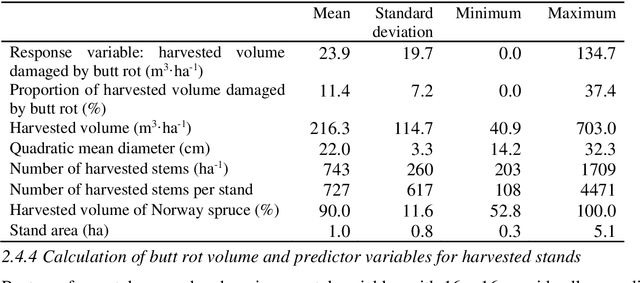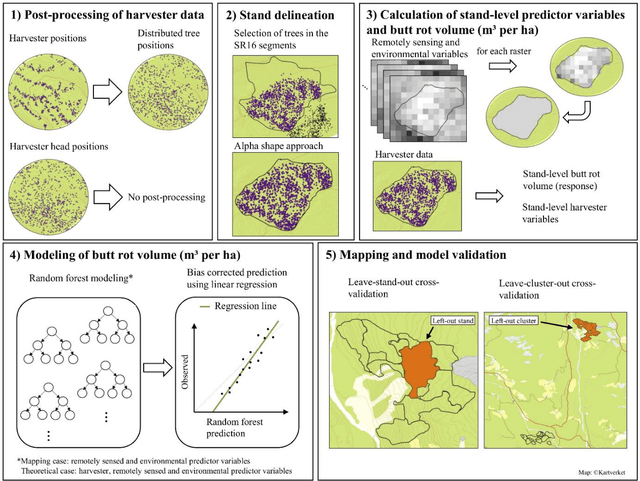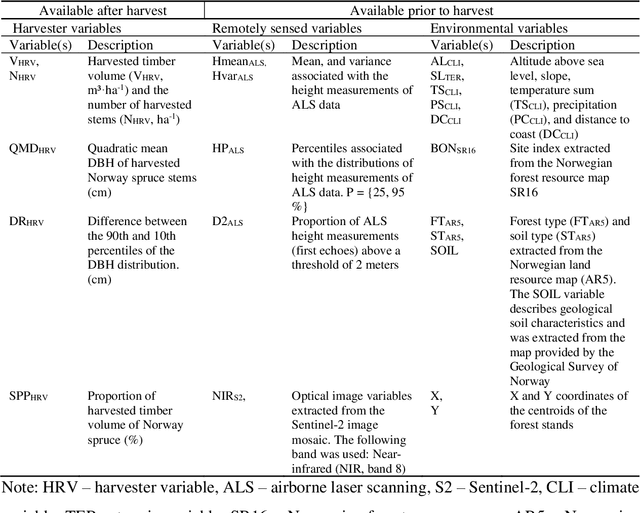Marius Hauglin
Prediction of butt rot volume in Norway spruce forest stands using harvester, remotely sensed and environmental data
Jul 09, 2021



Abstract:Butt rot (BR) damages associated with Norway spruce (Picea abies [L.] Karst.) account for considerable economic losses in timber production across the northern hemisphere. While information on BR damages is critical for optimal decision-making in forest management, the maps of BR damages are typically lacking in forest information systems. We predicted timber volume damaged by BR at the stand-level in Norway using harvester information of 186,026 stems (clear-cuts), remotely sensed, and environmental data (e.g. climate and terrain characteristics). We utilized random forest (RF) models with two sets of predictor variables: (1) predictor variables available after harvest (theoretical case) and (2) predictor variables available prior to harvest (mapping case). We found that forest attributes characterizing the maturity of forest, such as remote sensing-based height, harvested timber volume and quadratic mean diameter at breast height, were among the most important predictor variables. Remotely sensed predictor variables obtained from airborne laser scanning data and Sentinel-2 imagery were more important than the environmental variables. The theoretical case with a leave-stand-out cross-validation achieved an RMSE of 11.4 $m^3ha^{-1}$ (pseudo $R^2$: 0.66) whereas the mapping case resulted in a pseudo $R^2$ of 0.60. When the spatially distinct k-means clusters of harvested forest stands were used as units in the cross-validation, the RMSE value and pseudo $R^2$ associated with the mapping case were 15.6 $m^3ha^{-1}$ and 0.37, respectively. This indicates that the knowledge about the BR status of spatially close stands is of high importance for obtaining satisfactory error rates in the mapping of BR damages.
 Add to Chrome
Add to Chrome Add to Firefox
Add to Firefox Add to Edge
Add to Edge